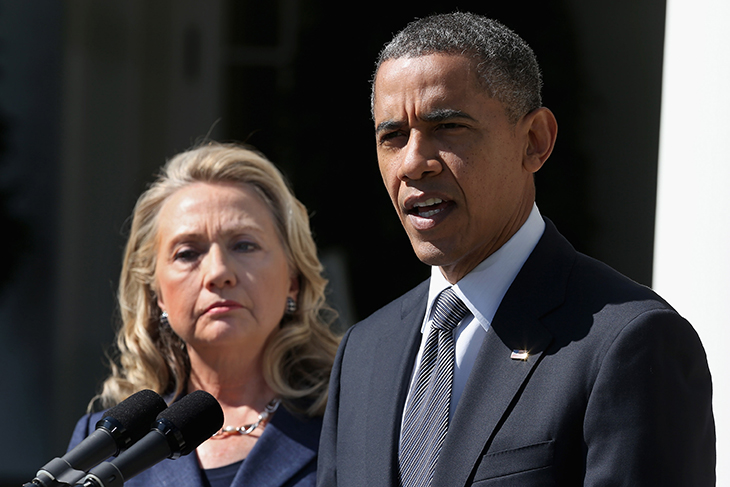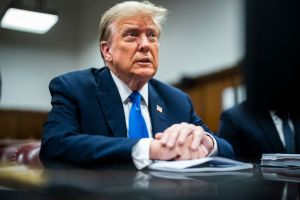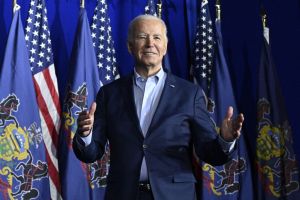Hard as the programmers try and tell us there is only one story at a time — Ukraine for now — or that a trite phrase like “but her emails” dismisses one of the most important political events of our time, something sinister happened in the United States which demands our attention. If we remain distracted, it will happen again in 2024.
We are looking for two smoking guns now in connection with Russiagate. Today’s Part I will show that Hillary Clinton herself sat atop a large-scale conspiracy to use the tools of modern espionage to create and disseminate false information about Donald Trump. Part II to follow will show that the FBI was an active participant in that conspiracy. In the mainstream media vernacular, we are bearing witness.
In summer of 2016, Hillary Clinton’s private email server and her improper handling of classified information was the political story. Consensus was that the election was Hillary’s to lose — that her opponents in general and the Trump clown show in particular could not stop her.
But despite the mainstream media’s heroic attempts to downplay the importance of the emails, the issue lingered in the public mind, often aided by Hillary’s own contradictory statements. The emails nagged at the Clinton campaign — her unsecured server lay exposed during her State Department trips to Russia and China, and the deepest fear was that her internal communications and all that they had to say about things like the Clinton Foundation might appear any day on Wikileaks, ending her career. That is what really mattered, lost in a cloud of mumbo jumbo over whether having classified material on an unclassified server was actionable or not. It is also why Julian Assange will never leave prison alive.
Clinton tried to get ahead of the story. The initial shot was fired on July 24, 2016 by campaign manager Robby Mook, who was the first to claim there was a quid pro quo between Trump and Russia. “It was very concerning last week that Donald Trump changed the Republican platform to become what some experts would regard as pro-Russian,” Mook said, referring to a false story from the GOP convention just a few days earlier. (Fun fact: the media this past month revived this fully-negated story, claiming it demonstrated that Trump and Putin were in cahoots over Ukraine early on.)
The New York Times sent up a warning flare to all mainstream media the next day announcing Clinton was making the Trump-Russia allegation a “theme” of the campaign. As if she knew just what was coming next, Hillary took that as her cue to claim the Russians were trying to destroy her campaign, a theme which soon morphed into the narrative that the Russians were trying to help Trump. That soon changed again as themes were crowd-tested, and the theme settled on the notion that Trump and Putin were working in collusion to elect Trump as a Manchurian candidate.
A prime driver behind all this was a mysterious “dossier,” including a “pee tape” — kompromat that Moscow supposedly held to control Trump. Word was a former MI6 intelligence officer named Christopher Steele compiled the dossier, giving the whole thing Bond-like credibility. American media openly speculated on Trump’s imminent arrest for treason even as he won the election. The FBI’s James Comey and CIA’s John Brennan briefed/threatened president-elect Trump on the dossier as the full contents spilled into the media. Talk shifted to impeachment.
We know now the dossier was fiction. Steele’s raw information was provided by the Clinton campaign, with his chief source working for the Brookings Institute. Steele worked as a double agent, feeding Clinton-bought fake info to the FBI while pretending he was an FBI informant with sources deep inside Russia. The dossier was fully a product of the Clinton campaign.
We also now know the Clinton campaign, via one of its lawyers, Michael Sussmann, gathered internet DNS data on Trump and used that to create a completely fictional story about Trump using a secret server connected to the Alfa Bank to communicate with his Russian “handlers.” It turns out some of the academics who investigated the DNC server break-in were the same ones who fed Sussmann data on Alfa Bank. And get this — they were paid by the Pentagon. Sussmann was the bridge between the two ops, working for the DNC to pin the server hack on Russia and facilitating the Alfa Bank story behind the scenes.
Sussmann also peddled a false story about Russian smartphones connecting into the Trump White House. Sussmann hid his relationship to Clinton from the FBI, pretending to be a “concerned citizen.” Sussmann is under indictment by Special Counsel John Durham, and he does not dispute these basic facts in his own defense filing. He only claims his lying was immaterial. His most recent effort to throw out evidence leading to his indictment failed.
Both the dossier op and the DNS op were funded by Clinton campaign money laundered through its lawyers at Perkins Coie and then contractors Fusion GPS and Orbis. In both instances the false information created was peddled to the FBI (and CIA) by a Clinton-paid stooge pretending not to be affiliated with the campaign. As noted, Steele posed as an FBI informant and Sussmann as a “concerned citizen.”
Both ops used a sophisticated information sub-op, feeding the media as if Steele and Sussmann were not the source and then having Steele and Sussmann step in to serve as anonymous confirmers: an inside loop. In both instances the FBI took the bait and opened unprecedented full-spectrum investigations into first candidate Trump, and then president Trump.
There was one more route into the FBI: Department of Justice official Bruce Ohr. Ohr’s wife Nellie worked for Fusion GPS, the front company for Steele, having previously done contract work for the CIA. Nellie passed the Steele dossier to her husband to hand-carry the work into the FBI. Bruce Ohr, despite acknowledging that it broke all rules of evidence handling, did just that on July 30, 2016. The FBI issued infiltration orders to Stephan Halper to start running operation Crossfire Hurricane against Trump staffers.
Four years after all that, on October 6, 2020, then-director of national intelligence John Ratcliffe declassified documents revealing that then-CIA director John Brennan briefed then-president Obama on or about July 28, 2016 on Hillary Clinton’s plan to tie candidate Trump to Russia as a means of distracting the public from her use of a private email server.
The highly-redacted document states, “We’re getting additional insight into Russian activities from [REDACTED]. Cite alleged approved by Hillary Clinton on July 26 a proposal from one of her foreign policy advisers to vilify Donald Trump by stirring up a scandal claiming interference by the Russian security service.”
Ratcliffe in 2020 also revealed that in September 2016, the CIA forwarded to the FBI an investigative referral on Hillary Clinton approving “a plan concerning U.S. presidential candidate Donald Trump and Russian hackers hampering U.S. elections in order to distract the public from her email scandal.”
The mainstream media at the time dismissed these two important disclosures as unverified disinformation. The problem with simply waving away these documents is the very high threshold for information to actually reach the president. Every day a near-infinite amount of information is collected by the CIA. A tiny percentage of that is culled for the standing agency briefings the president receives. An even tinier subset is seen as important and credible enough to be personally briefed by the CIA director face-to-face with the president.
Rarely is there near-time “verification” with intelligence. There is, however, “confidence” — how sure the CIA is that the information is true. The director would not waste his boss’s time with intelligence of low or medium confidence (and neither would the agency do the same in sending its referral on to the FBI.)
Knowing what we know now about the Clinton campaign funding of the ops and Clinton personnel involvement, Brennan’s confidence is better understood. And it is important to remember that Brennan openly supported Hillary; he was not the guy to dish dirt on her. He was just making sure his boss, Barack Obama, had a heads up if the whole thing was ever exposed.
Both ops ran on Clinton’s money and Clinton’s people. Both ops used the same tradecraft. And the smoking gun of Brennan’s notes ties it all to Hillary herself.


















